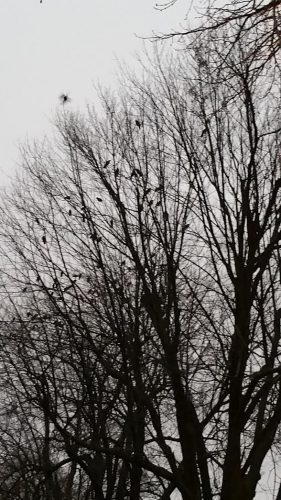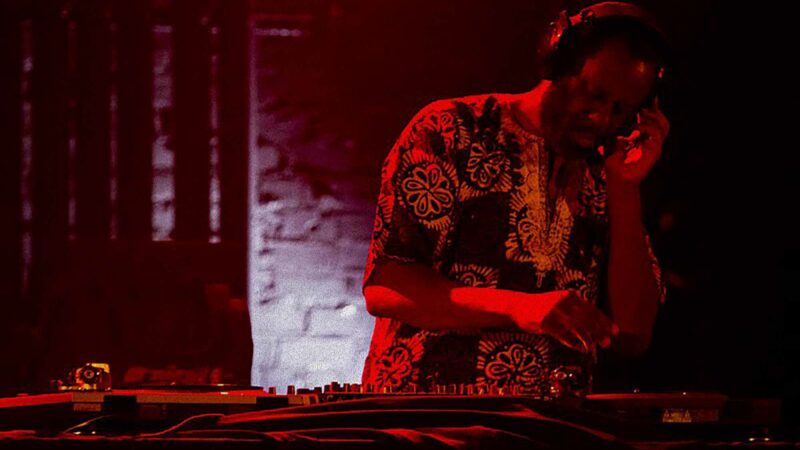
Birds
In the National Gallery of Canada, an art piece called “The Sulking Room” by Jana Sterbak is accompanied by the following text:
The term “boudoir” originated in the eighteenth century to describe a room in which aristocratic women could retire to be alone. Revealing the history of the word (from the French “bouder”), Sterbak suggests a more subversive use of this room. While the idea of sulking often connotes a negative stereotype of female behaviour, it can also suggest a way of manipulating or controlling a situation by withdrawing. The sulking room becomes a private, feminine space where women are able to exercise a certain degree of power, and can seclude themselves, evading the public sphere. (https://www.gallery.ca/en/see/collections/artwork.php?mkey=43084)
The notion of a place where women can talk among themselves, even sulk – or maybe rant, rage, and agitate – is likely foreign to those who are today engaged in doing this via the various social media that occupy so much daily time. But it may find an echo in some of the various spaces where “affinity” groups currently gather and exclude “others.” Think of “womyn” only or blacks only caucuses, sometimes referred to as “safe” places.
Even for women who do not tweet, post on Facebook or take part in chat groups online, and for whom safety is probably more related to structural barriers that exclude them from public spaces, a “room of one’s own” is likely still thought of differently than when Virginia Woolf first wrote about it. Yet it still needs attention, taking care not to confuse privacy (which I want to support) with imprisonment, which is to be opposed and protested. And before exploring the main issue on which I want to focus, a bit more musing seems relevant.
Silvia Federici is always a source of rich, thoughtful insights, and she rightly reminds us of the importance of “the commons” and our need to reclaim it. I want to consider reclaiming the boudoir as well, thinking of it subversively as Sterbak has portrayed it. Collective/collaborative communities are, of course, essential for transforming society, for solidarity, for political and social changes. But perhaps we also need some space for ourselves, a place to be solitary, to be alone, whether just to read, listen to music, meditate, or look out a window quietly and on our own. And increasingly, some are suggesting how we actually gain energy in being alone, especially when consensus-building, communal living and collective activism exhaust our bodies and spirits.
So, maybe reclaiming the boudoir, at least as a metaphor as I am using it, will actually allow us a way to ensure that we retain and restore our activist energies. Perhaps cultivating and refreshing our own strengths and energies will make us better able to contribute to the pool of resources needed to transform society?
In the past I have lauded the notion of interdependence, and I want to be clear that I am not now contradicting myself. The boudoir independence I’m musing about here is not in opposition to interdependence, but rather something that may on occasion be a corollary, even a requirement for nourishing the broader notion of our interdependence. As a complement to all the learning and survival that sharing allows, sometimes we may also grow by being alone, emphasizing, however, that being solitary does NOT mean being individualistic. I’m envisioning this more as an operational expression for those times when many of us may wish we could actually “stop the world, we want to get off.” Getting off is not giving up, but taking some boudoir time, as it were, to renew our own energies.
The boudoirs I imagine are feminist ones, and this perspective is crucial, since historically and at present, sexism underlies much of what is defined as and allowed to be women’s “proper” space and place – policies and practices placed under outside control. And it is no small irony, perhaps, that the very word in French is a masculine noun: LE boudoir! Having a room of one’s own is too often forced on women whom society would really like to hide away, with obvious examples being those who are disabled or aged/aging. (And here some clarification may be useful: when I write about “women,” I am including ALL who identify themselves as such.)

Through a glass door darkly… or through a dark boudoir door
Sadly, a room of her own is more likely not chosen by a woman but instead imposed on her. This is most egregious when public and private policies segregate those claimed to take up “too much space,” literally and figuratively. Or when those with power and privilege insist that certain women need to be isolated until they can conform to arbitrary – and potentially cruel – normative criteria of what a “woman” should be like, including how she should look and behave.
A powerful and probably not so far-fetched example of this, given the various pharmaceutical products created to make women “behave” properly (i.e., stop sulking), is the chilling depiction of the yellow wallpapered “boudoir,” or at least a room of her own, that Charlotte Perkins Gilman wrote about over 100 years ago. (http://www.eastoftheweb.com/short-stories/UBooks/YelWal.shtml.) The room into which the (so tellingly) never-named narrator is placed by her physician husband who wants her to “get well” had originally been a children’s nursery – a detail that brings into painfully sharp focus the sexism (and violence) of putting a woman in her place.
When imposed on women, such a room of their own is not a privately chosen hideaway but another’s chosen place to hide them away – more a prison than a parlour for those sent there, whether by family members, biomedical “experts” or state and social schemes. Gilman’s narrator’s husband (who does get a name: John) felt she was sulking too much and thus sequestered her for her “own good,” so she would get – according to his standards – well. Her fate, however, presaged that of contemporary women who are set aside allegedly for their own benefit.
I resist creating yet another cumbersome neologism, but can’t help thinking that the term “boudoirized” might be apt in these circumstances.
“Sulking” seems to be a very gendered behaviour; men who may experience similar moods are likely labelled as “brooding.” Moreover, a romantic aura often attaches to the brooding man, whereas the sulking woman is considered weak and fragile, unless she gives voice to her sulking and is then labelled “strident.”
Gilman’s heroine is said to need protection, like other women who sulk or otherwise show resistance. And where better to protect such women than by sequestering them – boudoirizing them – until they “get better,” or even more to the point, “look better.”
The boudoirized population grows in parallel with society’s efforts to remove those with disabilities, those with grey hair and wrinkled skin, those wearing supposedly “ostentatious” garb, from our homes and public places. All too often we keep them in their own rooms (in residential housing or institutions) and away from selected workplaces. We close the doors and thereby avoid having to see them or to interrupt our own routines.
To reclaim the boudoir, then, may not be easy. It may even seem somewhat counterintuitive. But if we conceive of the boudoir as a self-chosen resource where being solitary nourishes our solidarity, it could perhaps become a treasured space. Only when it is imposed and becomes a place of confinement and isolation do we need to tear down its walls. Reclaiming the metaphorical boudoir as well as the commons may actually be complementary, not competing, goals.










